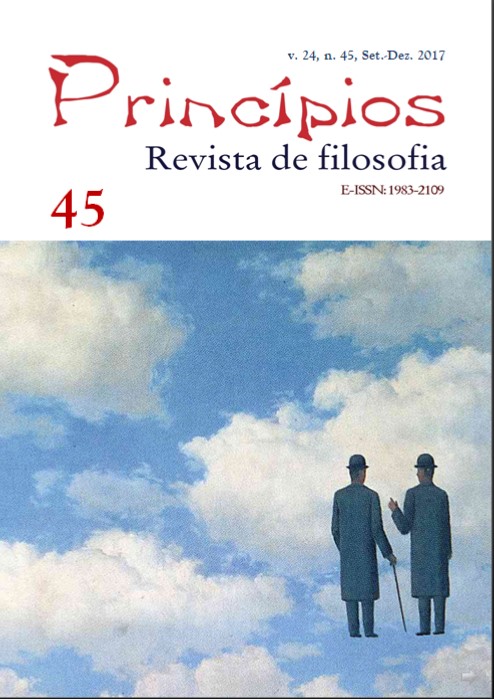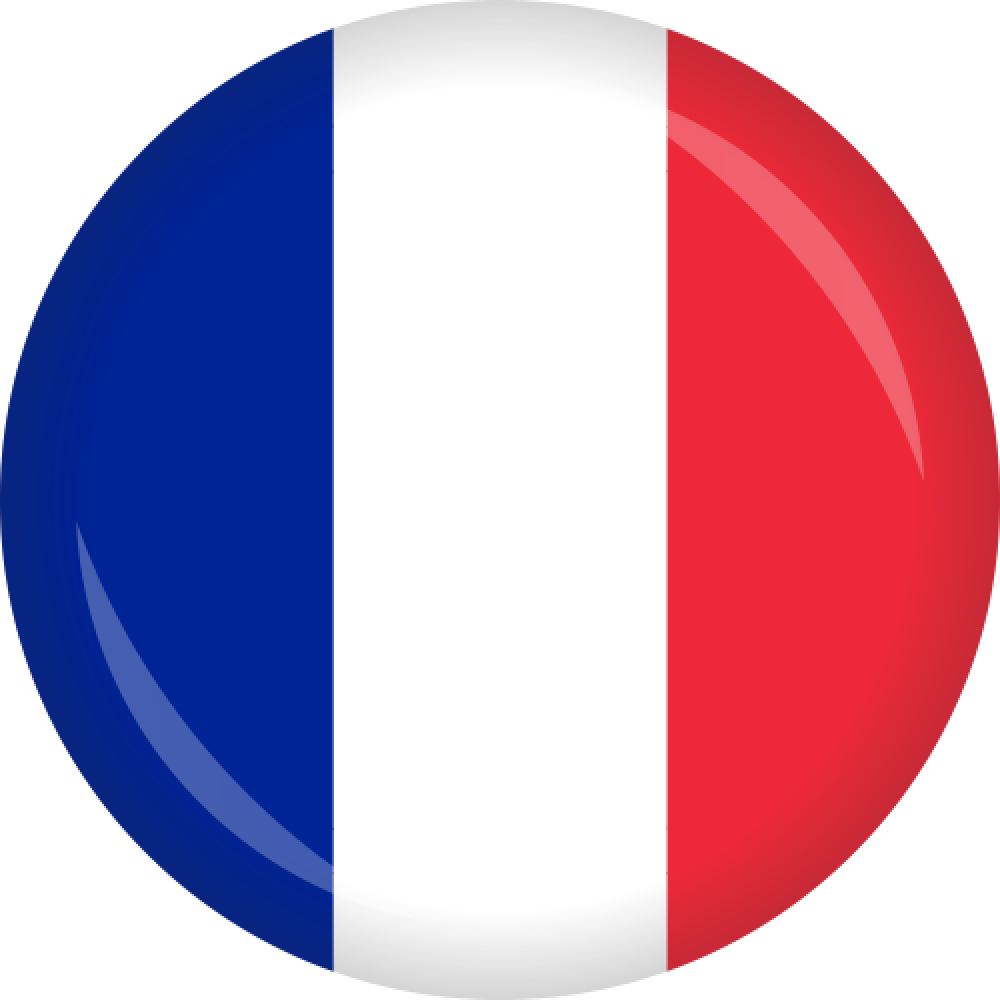A pintura abstrata e Schelling: atravessar a “pele da natureza” [Abstract painting and Schelling: crossing "Nature's skin"]
DOI :
https://doi.org/10.21680/1983-2109.2017v24n45ID11877Mots-clés :
Kandisky, Klee, Mímesis, Natureza, Pintura, Schelling [Kandisky, Mimesis, Nature, Painting, Schelling]Résumé
A filosofia das artes plásticas de F. W. J. Schelling (1775-1845) é enraizada em sua filosofia da natureza, seja no postulado da natureza como produtividade, seja nos conceitos de aconsciente e desaceleração. O paralelismo entre produtividade da natureza e criação artística é base, para Schelling, de uma proposta de mímesis que emule a natureza não como mero produto passivo e inerte que se reproduz com fidelidade extrema, mas como força produtora, expressa pela imaginação do artista em seu trabalho de transformar a matéria. Nessa via, intérpretes como Beierwaltes, Frank e Schuback notaram afinidades entre as concepções schellinguianas e os escritos de pintores abstratos, especialmente Paul Klee (1879-1940) e Wassily Kandinsky (1866-1944). Todavia, desses trabalhos, apenas o de Schuback desenvolve textualmente tal proximidade em Klee. Nossa proposta, nesse sentido, consiste em explicitar textualmente a relação entre natureza e pintura abstrata, apontando como tal vínculo norteia a crítica e reavaliação positiva da mímesis de Kandinsky e Klee, aproximando-os de Schelling.
[Schelling’s philosophy of plastic arts is deeply rooted in his Philosophy of Nature, whether in the postulate of Nature as productivity or in the concepts of deceleration and a-concious. The parallel between Nature’s productivity and artistic creation is the cornerstone of the Schellinguian conception of mimesis qua emulation of nature as a productive force, and not a mere product. In this line of argument, some interpreters such as Beierwaltes, Frank and Schuback noticed similarities between the writings of abstract painters, particularly Paul Klee (1879-1940) and Wassily Kandinsky (1866-1944). However, only Schuback further developed a conceptual connection between Klee and Schelling based on their writings. Our proposal, in that sense, is to develop the connection between nature and abstract painting in Kandinsky and Klee, thus revealing the similarities between their tenets and Schelling’s.]
Téléchargements
Références
ARGAN, J. C. L’Arte Moderna 1770-1970. Firenze: Sansoni, 1970.
ARGAN, J. C. Preface. In: KLEE, P. Paul Klee notebooks. Volume 1: The thinking eye. Trans. Raplh Manheim. Ed. Jürg Spiller. 4th ed. London: L. Humpries, 1973, p. 11-18.
ASSUMPÇÃO, G. A. Crítica do juízo teleológico e organismo em Kant e Schelling. Doispontos. Curitiba; São Carlos, v. 2, n. 2, 2015, p. 123-135. Disponível em:
<http://ojs.c3sl.ufpr.br/ojs2/index.php/doispontos/article/view/38898/26528>. Acesso em: 22 fev. 2017.
BEIERWALTES, W. Einleitung. In: SCHELLING, F. Texte zur Philosophie der Kunst. Stuttgart: Reclam, 1982, p. 3-35.
BEIERWALTES, W. Das wahre Selbst: Studien zu Plotins Begriff des Geistes und des Einen. Frankfurt am Main: V. Klostermann, 2001.
CHO, Young-Chun. Natur als Subjekt: Schellings Naturphilosophie und ihre ökologische Bedeutung. Saarbrücken: VDM (Verlag Dr. Müller), 2008.
FRANK, M. Einführung in die frühromantische Ästhetik: Vorlesungen. Frankfurt am Main: Suhrkamp, 1989.
FREITAS, R. Estética como ética da natureza: Kant como precussor da ética ecológica. Revista Exagium. n. 11, 2013, p. 29-44. Disponível em:
<http://www.revistaexagium.ufop.br/PDF/Edicao_Atual/Numero11/11-2.pdf >. Acesso em: 22 fev. 2017.
GONÇALVES, M. Schelling: filósofo da natureza ou cientista da imanência? In: PUENTE, F. R.; VIEIRA, L. A. (Org.). As filosofias de Schelling. Belo Horizonte: UFMG, 2005. p. 71-90.
HÖSLE, V. Philosophie der ökologischen Krise: Moskauer Vorträge. München: C. H. Beck, 1991.
JACOBS, W. Schelling lesen. Sttutgart: Fromman-Holzboog, 2004.
KANDINSKY, W. Über das Geistige in der Kunst: insbesondere in der Malerei. Mit acht Tafeln und zehn Originalholzschnitten. Dritte Auflage. München: R. Piper, 1912. Disponível em:
< http://archive.org/details/berdas00kand >. Acesso em: 12 fev. 2017.
KANDINSKY, W. Abstrakte Malerei. In: KANDINSKY, W. Essays über Kunst und Künstler. Hrsg. von Max Bell. Stuttgart: G. Hatze, 1955a. p. 172-180. Disponível em: <http://archive.org/stream/essberk00kand/essberk00kand_djvu.txt >. Acesso em: 12 fev. 2017.
KANDINSKY, W. Interview Nierendorf-Kandinsky. In: KANDINSKY, W. Essays über Kunst und Künstler. Hrsg. von Max Bell. Stuttgart: G. Hatze, 1955b. p. 202-206. Disponível em: <http://archive.org/stream/essberk00kand/essberk00kand_djvu.txt >. Acesso em: 12 fev. 2017.
KANDINSKY, W. Paul Klee. In: KANDINSKY, W. Essays über Kunst und Künstler. Hrsg. von Max Bell. Stuttgart: G. Hatze, 1955c. p. 130-133. Disponível em: <http://archive.org/stream/essberk00kand/essberk00kand_djvu.txt >. Acesso em: 12 fev. 2017.
KANT, I. Kritik der Urtheilskraft. In: KANT, I. Kants Werke. Akademie-Textausgabe. Band V. Berlin: W. de Gruyter, 1968. p. 165-485.
KLEE, P. Heroic Roses. 1938. Óleo sobre tela manchada. 68 x 52 cm. Düsseldorf: Kunstsammlung Nordheim-Westfallen. Disponível em: <http://www.abcgallery.com/K/klee/klee27.JPG >. Acesso em: 7 mar. 2017.
KLEE, P. Paul Klee notebooks. Volume 2: The nature of nature. Trans. Raplh Manheim. Ed. Jürg Spiller. 4th ed. London: L. Humpries, 1970.
KLEE, P. Creative Credo. In: KLEE, P. Paul Klee notebooks. Volume 1: The thinking eye. Trans. Raplh Manheim. Ed. Jürg Spiller. 4th ed. London: L. Humpries, 1973a. p. 76-80.
KLEE, P. Infinite natural history. In: KLEE, P. Paul Klee notebooks. Volume 1: The thinking eye. Trans. Raplh Manheim. Ed. Jürg Spiller. 4th ed. London: L. Humpries, 1973b. p. 3-14.
KLEE, P. On the whole idea of concept. The polarity of concepts. In: KLEE, P. Paul Klee notebooks. Volume 1: The thinking eye. Trans. Raplh Manheim. Ed. Jürg Spiller. 4th ed. London: L. Humpries, 1973c. p.15-16.
KLEE, P. The concept of structure in nature. In: KLEE, P. Paul Klee notebooks. Volume 1: The thinking eye. Trans. Raplh Manheim. Ed. Jürg Spiller. 4th ed. London: L. Humpries, 1973d. p. 333-341.
KLEE, P. Ways of nature study. In: KLEE, P. Paul Klee notebooks. Volume 1: The thinking eye. Trans. Raplh Manheim. Ed. Jürg Spiller. 4th ed. London: L. Humpries, 1973e. p. 63-67.
MONDRIAN, P. Natural reality and abstract reality: an essay in dialogue form. In: SEUPHOR, M. Piet Mondrian: life and work. New York: H. N. Abrams, 1957. Disponível em: <https://archive.org/details/pietmondrianlife00seup >. Acesso em: 10 fev. 2017.
PLOTINO, Acerca da beleza inteligível (Enéada V, 8[31]). Intr., trad. anot. Luciana Gabriela E. C. Soares. Kriterion. Belo Horizonte, n. 107, jun. 2003, p. 110-135.
SCHELLING, F. W. J. Philosophie der Kunst. In: SCHELLING, F. W. J. Sämmtliche Werke. Erste Abtheilung. Fünfter Band. Stuttgart; Augsburg: Cotta, 1859. p. 353-736.
SCHELLING, F. W. J. Ueber das Verhältnis der bildenden Künste zu der Natur. In: SCHELLING, F. W. J. Sämmtliche Werke. Erste Abtheilung. Siebenter Band. Stuttgart; Augsburg: Cotta, 1860. p. 289-329.
SCHELLING, F. W. J. Ideen zu einer Philosophie der Natur. In: SCHELLING, F. W. J. Friedrich Wilhelm Joseph Schelling Historisch-Kritische Ausgabe. Reihe I: Werke 5. Herausgegeben von Manfred Durner. Unter Mitwirkung von Walter Schieche. Stuttgart: Frommann-Holzboog, 1994.
SCHELLING, F. W. J. Von der Weltseele – Eine Hypothese der höhern Physik zur Erklärung des allgemeinen Organismus (1798). In: SCHELLING, F. W. J. Friedrich Wilhelm Joseph Schelling Historisch-Kritische Ausgabe. Reihe I: Werke 6. Herausgegeben von J. Jantzen, Kai Torsten Kanz und Walter Schieche. Stuttgart: Frommann-Holzboog, 2000.
SCHELLING, F. W. J. Erster Entwurf eines Systems der Naturphilosophie (1799). In: SCHELLING, F. W. J. Friedrich Wilhelm Joseph Schelling Historisch-Kritische Ausgabe. Reihe I: Werke 7. Herausgegeben von Wilhelm Jacobs und Paul Ziche. Stuttgart: Frommann-Holzboog, 2001.
SCHELLING, F. W. J. Allgemeine Deduction des dynamischen Processes. In: SCHELLING, F. W. J. Friedrich Wilhelm Joseph Schelling Historisch-Kritische Ausgabe. Reihe I: Werke 8. Herausgegeben von Manfred Durner und Wilhelm Jacobs. Stuttgart: Frommann-Holzboog, 2004. p. 273-371.
SCHELLING, F. W. J. System des transscendentalen Idealismus (1800). In: SCHELLING, F. W. J. Friedrich Wilhelm Joseph Schelling Historisch-Kritische Ausgabe. Reihe I: Werke 9, Teilband 1. Herausgegeben von Harald Korten und Paul Ziche. Stuttgart: Frommann-Holzboog, 2005.
SCHUBACK, M. S. The eye and the Spirit of Nature: some reflections on Merleau-Ponty’s reading of Schelling concerning the relationship between art and Nature. In: BURKE, P.; WIRTH, J. M. (Ed.). The barbarian principle: Merleau-Ponty, Schelling, and the question of Nature. New York: SUNY, 2013. p. 307-319.
SHAW, D. Z. “Animals, those incessant somnambulists”: a critique of Schelling’s anthropocentrism. In: MCGRATH, S. J.; CAREW, J. (Ed.). Rethinking German Idealism. London: MacMillan, 2016. p. 77-97.
TILLIETTE, X. L’Absolu et la philosophie: essais sur Schelling. Paris: PUF, 1987.
VIEIRA, L. Schelling. Rio de Janeiro: J. Zahar, 2007.
WIRTH, J. M. The art of Nature: on the agony of the Will in Schelling and Merleau-Ponty. In: BURKE, P.; WIRTH, J. M. (Ed.). The barbarian principle: Merleau-Ponty, Schelling, and the question of Nature. New York: SUNY, 2013. p. 321-340.
ZERBST, A. Schelling und die bildende Kunst: zum Verhältnis von kunstphilosophischen System und konkreter Werkkentnis. München: W. Fink, 2011.
Téléchargements
Publié-e
Comment citer
Numéro
Rubrique
Licence
Autores mantêm os direitos autorais e concedem à revista o direito de primeira publicação, com o trabalho simultaneamente licenciado sob a Licença Creative Commons Attribution que permite o compartilhamento do trabalho com reconhecimento da autoria e publicação inicial nesta revista.
Termos da licença:
| Não Comercial (NC) | Os licenciados podem copiar, distribuir, exibir e executar a obra e fazer trabalhos derivados dela, desde que sejam para fins não comerciais. |
| Compartilha Igual (SA) | Os licenciados devem distribuir obras derivadas somente sob uma licença idêntica à que governa a obra original ou menos restritiva. |


 Português (Brasil)
Português (Brasil) English
English Español (España)
Español (España) Français (Canada)
Français (Canada)


